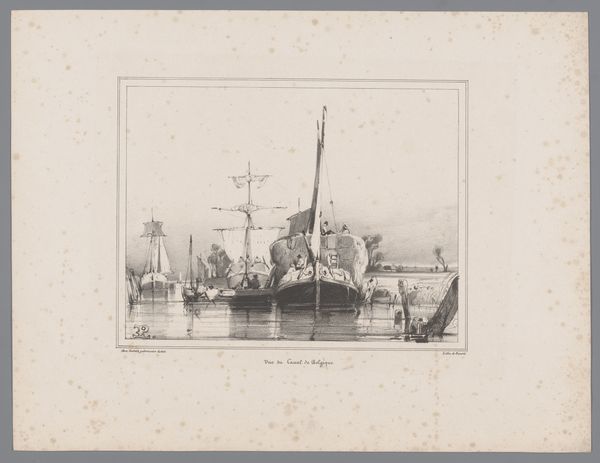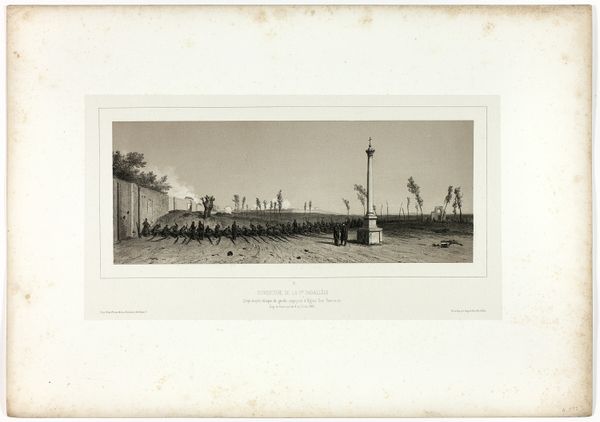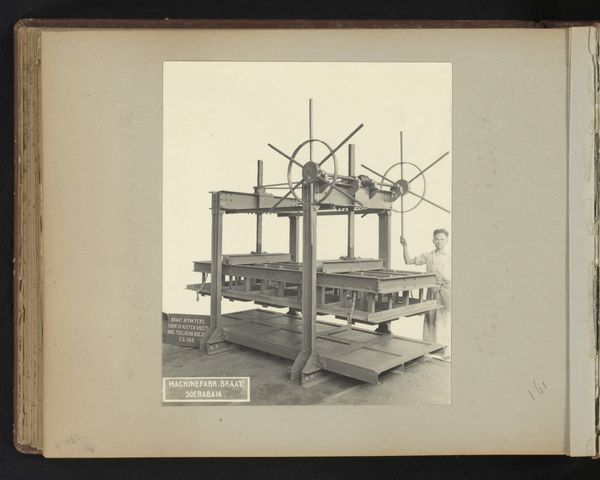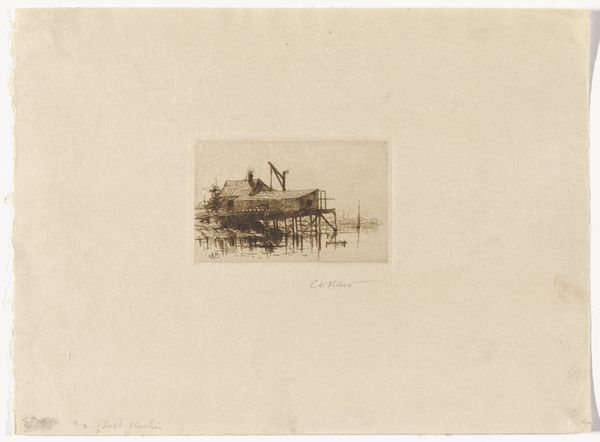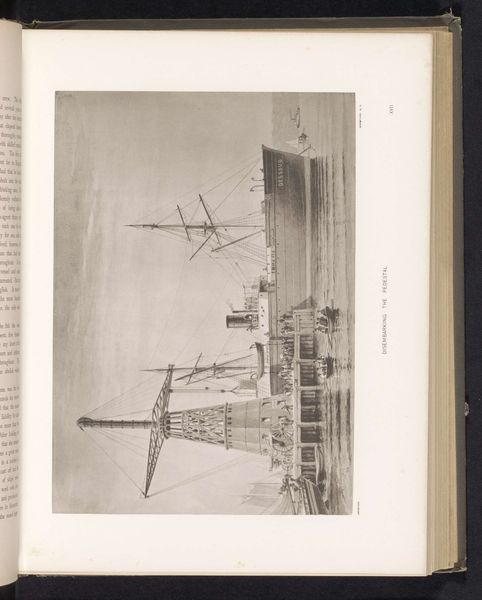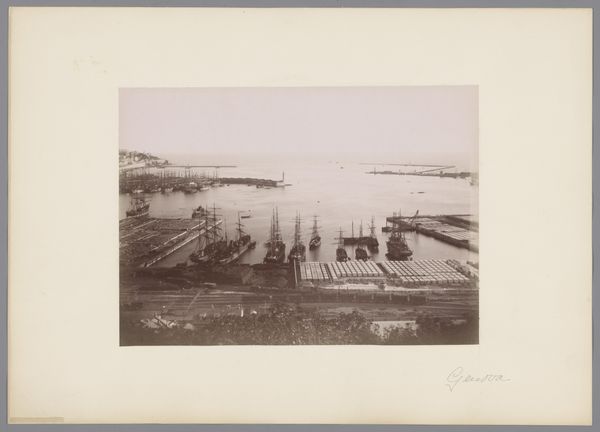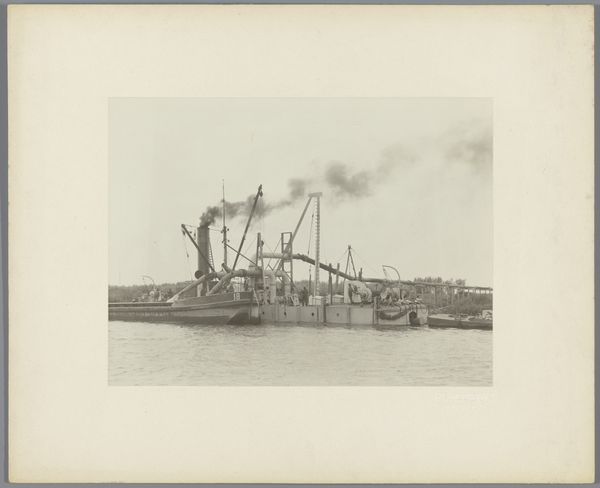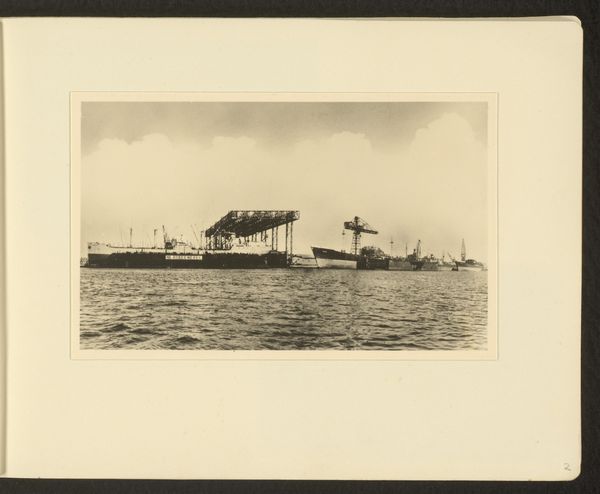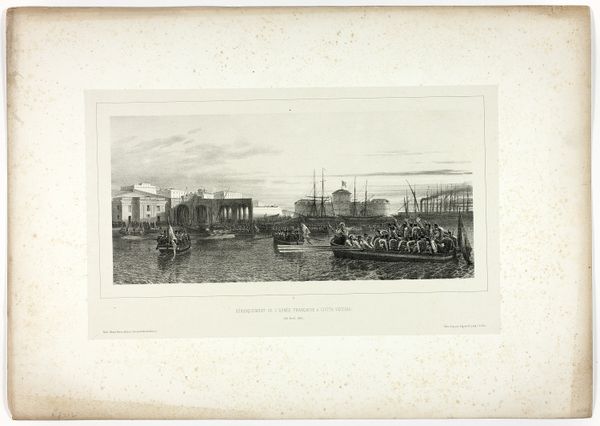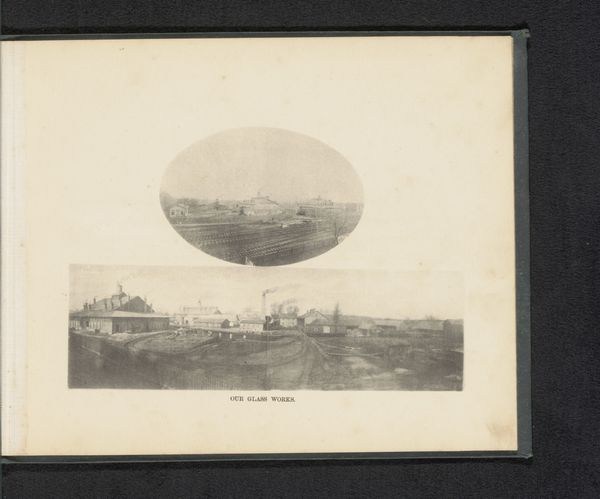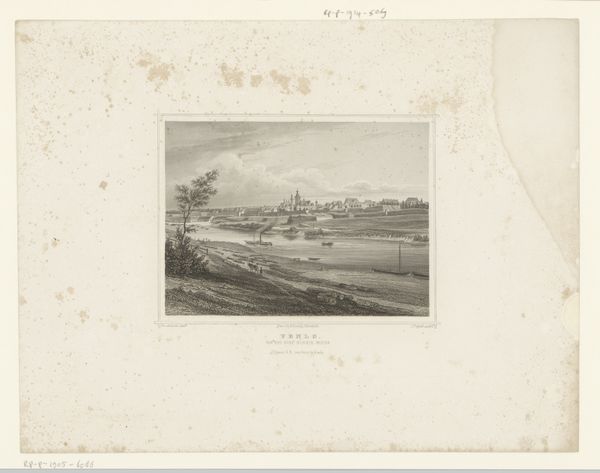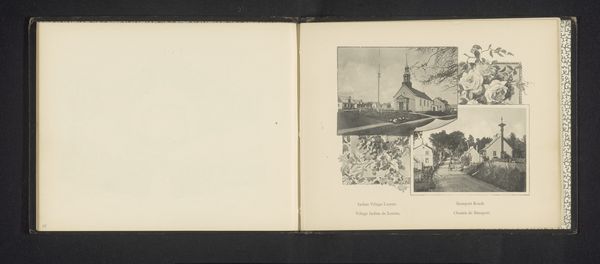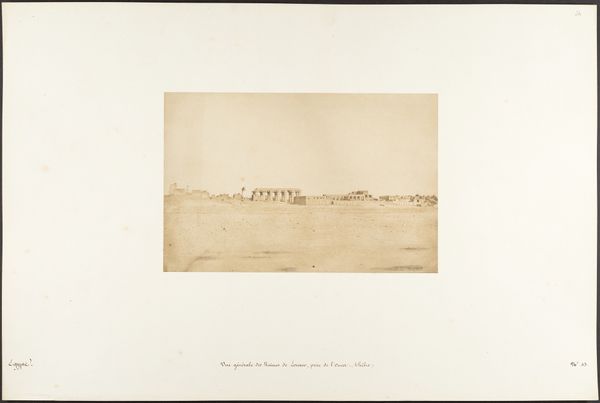
drawing, print, etching, paper
#
drawing
# print
#
etching
#
landscape
#
paper
#
cityscape
#
realism
Dimensions: height 241 mm, width 321 mm
Copyright: Rijks Museum: Open Domain
Curator: This etching, realized on paper by Auguste Ballin in 1878, offers a fascinating glimpse into Portsmouth’s harbor. Titled "Gezicht op schepen in Portsmouth", or "View of ships in Portsmouth", it really captures a moment in maritime history. What’s your immediate take? Editor: A somberness washes over me; there is a stark stillness. Even with what must have been the bustling activity of a port, Ballin manages to create a scene of quiet contemplation. The water acts as a mirror, doubling the weight of these enormous vessels, trapping them in place. Curator: Interesting that you highlight the mirroring effect. Consider the symbolic weight of ships, particularly those in harbor. A ship can be seen as an embodiment of a nation's power, an icon of ambition and outward reach. Confined, it can conversely represent a state of suspended potential. Editor: I agree. Think of Portsmouth itself. The port looms large in the British naval narrative and its connection to national identity. It becomes a symbol of that power and also, perhaps, of its associated responsibilities. Are these warships or merchant vessels? The difference shifts the understanding from defense to trade. Curator: It’s not immediately clear from the composition. It may reflect Ballin’s desire to present Portsmouth not as a site of pure military might, but as a complex tapestry of maritime activity—one sustained by labor and ingenuity. These dockyards hummed with activity, shaping not only the ships but also the very character of the city. Editor: The absence of people also plays into the work's effect. Their ghostly presence is palpable. The artist seems to be focused more on the machines of industry. These objects and structures, even then, likely signified a transition toward modernization and perhaps away from dependence on human skill. Curator: Absolutely, and consider too how the etching technique lends itself to this mood. The intricate lines capture so much detail, yet it also conveys a certain sense of the ephemeral; the ships are imposing, solid structures but seem suspended between moments. Editor: The etching technique is compelling: it evokes realism, of course, but a realism that is tempered by shadow and ambiguity. What does it mean to be ‘realistic’? Does Ballin depict what exists, or create something anew? Curator: A very apt question indeed. By focusing on ships caught between journeys, the work seems to emphasize the profound historical weight anchored within our ports. Editor: An excellent point. The artist’s rendition pushes us to reconcile with Britain's layered maritime story in visual symbols.
Comments
No comments
Be the first to comment and join the conversation on the ultimate creative platform.
